Is Vilnius Worth Visiting?
Disclaimer: Some links on this page may be affiliate links. If you purchase anything through them, I will receive a small commission at no extra cost to you! Further details in the Privacy Policy.
Introduction
Vilnius is worth visiting. It is one of the hidden gems of Europe.
This small city has everything ranging from stunning views, to a fascinating history, and even a quirky independent “country” which can be found. The Republic of Uzupis has declared independence from Lithuania, but all is not as it seems… Read on to find out more.
Oh, and this has to be one of the world’s most beautiful cities to visit around Christmas time. What it lacks in terms of Christmas markets (there are better options in nearby Latvia and Estonia), it more than makes up for with aesthetics and atmosphere.
We haven’t even mentioned the Hill of Three Crosses, Hales Turgus (a traditional local market) or the Museum of Occupations and Freedom Fights yet. The latter will educate you all about Lithuania and its dark past, including Nazi occupation during WWII, and Soviet occupation for almost half a century since.
This post will cover all of the above, after some history of Lithuania and general travel tips for visiting the country.
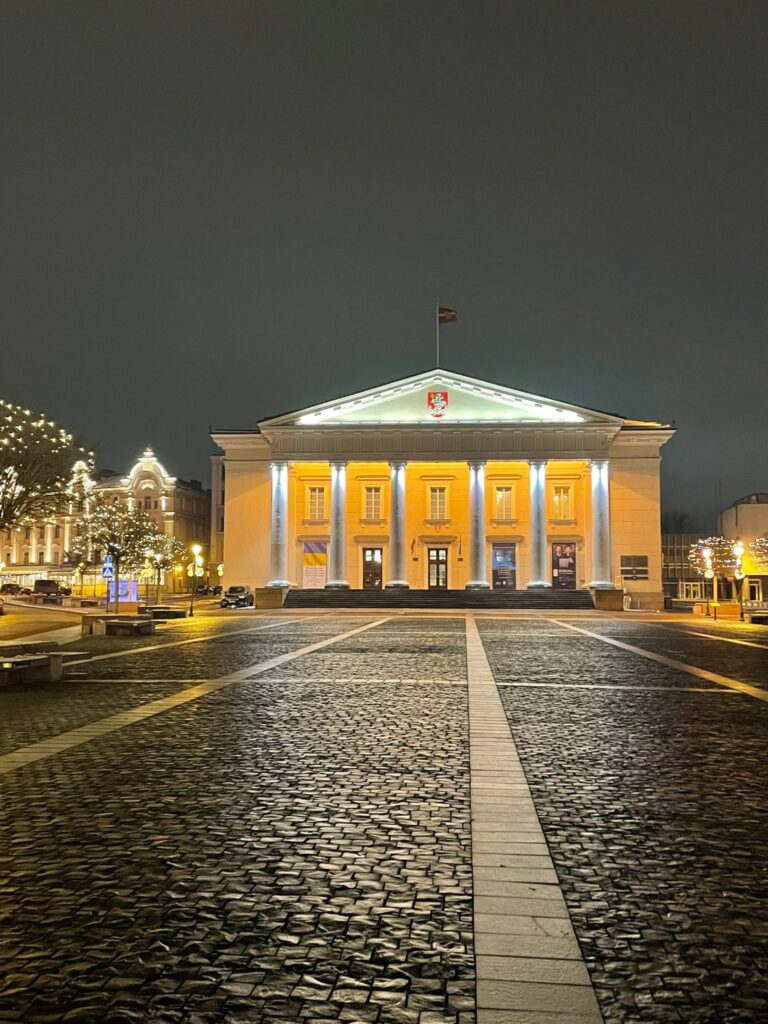
Background on Lithuania
Lithuania’s Short-lived Independence from the Russian Empire
The modern history of Lithuania is almost a carbon copy of the history in fellow Baltic nations Estonia and Latvia.
All three countries were members of the Russian Empire. After WWI they all gained independence as the empire collapsed amidst the chaos of the Russian Revolution, which saw Tsar Nicholas II abdicate. Just as the socialists took over Russia, the Baltic states gained independence in 1918. Whilst Russia gave way to the Soviet Union (USSR) in 1922.
Their joy would be short-lived. In 1939, the Molotov-Ribbentrop Pact split countries between Nazi Germany and the USSR into either the German or Soviet sphere of influence. Lithuania was in the German sphere initially, but switched to the Soviet sphere.
The Soviets forced the Lithuanian government to resign, and completed their takeover of the country. For two years, Lithuania turned into a hellscape where anti-communist politicians were purged, enemies of the USSR were sent to rot in hellish Siberian gulags, and taxes skyrocketed.
Therefore it came as a massive relief two years later when the Nazis launched Operation Barbarossa and invaded the Soviet Union. The Nazis forced the USSR out of Lithuania, and the locals were delighted…
Out of the Frying Pan, Into the Fire
The feeling of goodwill quickly evaporated when Lithuania started to see what Nazi Germany were all about. Many of the locals were either taken to Germany to work, or forced to fight for their occupiers. As for Lithuania’s Jewish population, the outcome was devastating.
Jewish neighbourhoods were razed to the ground with nothing left behind. Over 90% of Lithuanian Jews were murdered. There were around 160,000 Jews in Lithuania before the war, and only a tenth survived. The Jewish population never recovered, with only 3,000 Jews left in Lithuania today.
Three years after the Nazi occupation began in 1941, and the Soviet Union came back to retake the Baltics from a weakening Germany. The Germans had made too many enemies, overstretched their resources, and faced a multitude of defeats.
Lithuania became a part of the Soviet Union in 1944. The Lithuanian Soviet Socialist Republic was born, and one form of oppression was swapped with another once more.
Freedoms were repressed and citizens spied on to ensure there were no anti-Soviet sentiments amongst the population. For half a century, people lived in fear. It was not until the 1980s elected of Soviet leader Mikhail Gorbachev that Lithuania began to see the light.
Gorbachev was responsible for introducing glasnost and perestroika into the USSR. These were reforms that allowed more freedoms and transparency. They paved the pathway towards democracy and freedom for many of the Soviet republics.
One freedom gained by these policies was the right to protest. This led to the Singing Revolution: a series of peaceful protests across the Baltics calling for independence from the USSR.
The most notable of these protests was the Baltic Way. In this one, a massive 2 million residents of the Baltic countries formed a human chain from Tallinn to Vilnius via Riga.
Communism collapsed in the early 1990s, and Lithuania was able to gain freedom once again. And this time, it appears to be stable with little chance of foreign occupation any time soon.
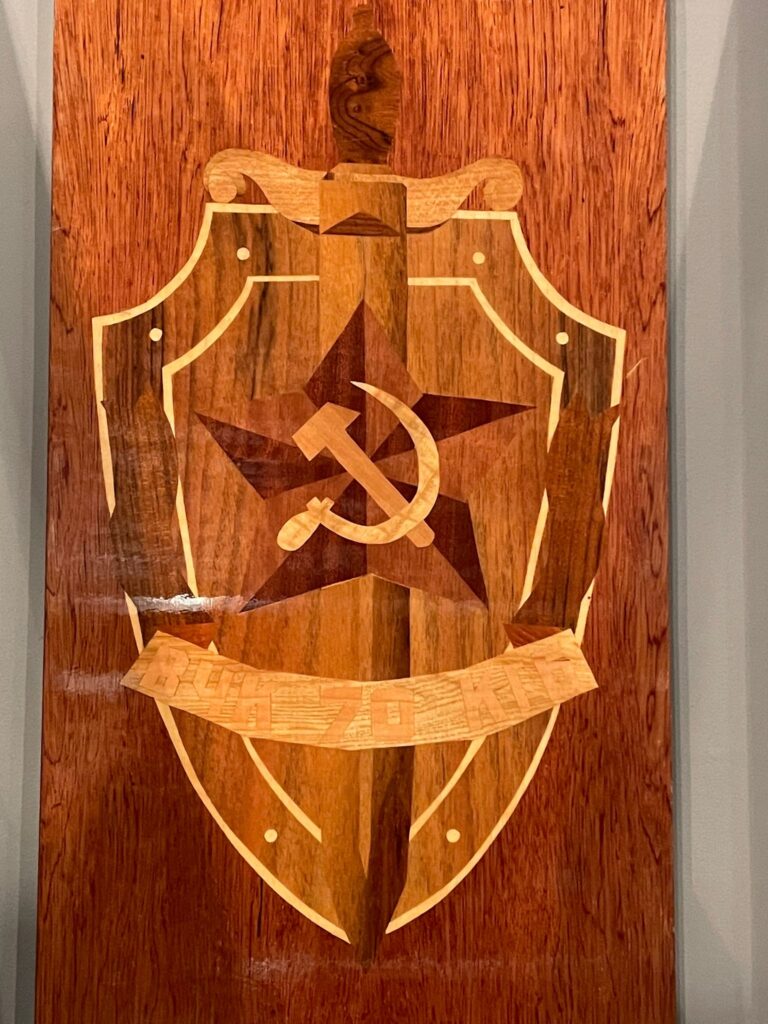
Post-Soviet Lithuania
Lithuania has become relatively stable since 1991. It has become a heavily westernised country, which joined the EU in 2004. Lithuania has since signed up for some of the EU’s primary institutions, such as the Schengen Zone which it joined in 2007. Lithuania also uses the euro as its currency. Something which has been in effect since 2015.
In 2004, a few weeks before joining the EU, Lithuania became a member of NATO. Being within the powerful military alliance means that it will be supported by major NATO heavyweights such as the UK and Germany if any enemy attacks.
Being in NATO gives Lithuania a major boost, as Russia has expressed a desire to recreate the Soviet Union. Although they will know deep down that messing with NATO will not end up well for Putin’s military.
Is Lithuania Safe to Visit?
Lithuania is very safe to visit. It is also safe to visit the capital Vilnius where crime rates are very low and formerly dangerous neighbourhoods such as Uzipis have been gentrified over time.
Lithuania scores 79 on the Safety Index, level with Chile and the UAE. Any score from 66 upwards is green, meaning the country in question is a safe one.
You do not have to worry about the Ukraine war having a knock-on effect if you visit Lithuania. As mentioned previously, Russia is unlikely to target any country in NATO. As a result, there are two likely targets should Russia choose to invade another former Soviet Republic. Georgia suffered a heavy defeat during a short Russian invasion in 2008 which resulted in the loss of Abkhazia and South Ossetia for the Georgians. Moldova on the other hand is small, not in NATO, has a tiny military and has lost a good chunk of its territory to the unrecognised pro-Russian “country” of Transnistria. Transnistria fought Moldova to keep the Soviet Union alive and has been propped up by the Russian military ever since. Therefore these two countries have far more to worry about than Lithuania.
If you visit during the winter, be aware that Lithuania can become very cold. Frostbite and hypothermia are potential issues that could arise as a result of too much cold exposure. If you dress in warm clothing and don’t stay outside all day and night then you shouldn’t have any problems.
When is the Best Time to Visit Lithuania?
The best time to visit Lithuania varies depending on what you are looking for.
To visit Lithuania in warm weather, the best time to go is from May to September. During these months, temperatures will average above 10 degrees Celcius each day.
If you wish to ski, then the best time to visit Lithuania is from December-March. Although Lithuania is the warmest of the three Baltic countries. Therefore you may be better off heading elsewhere for skiing.
I would say the best time to visit Vilnius is in December. This is when I visited, and the city is absolutely magical with all the Christmas decorations and the snowy backdrop. It is cold, however the positives outweigh the negatives for sure.
How to Visit Lithuania
As with its Baltic neighbours, Lithuania is a member of the Schengen Area. As a result the same visa policies apply.
You can visit Lithuania without a visa if you come from most European countries, or most mainland American countries. Exceptions: Belize, Bolivia, Ecuador, Guyana, Suriname, Kosovo, Belarus and Russia. In fact Russian and Belarussian citizens are restricted whilst applying for Lithuanian visas for now.
If you come from pretty much any other country, you will most likely need a visa. There are some exceptions however. Most of these are small countries (mostly obscure island nations with tiny populations). The notable exceptions are as follows: Malaysia, Taiwan, Japan, South Korea, Australia, New Zealand and the UAE.
How to get to Lithuania
There are three international airports in Lithuania. Kaunas (KUN) connects with Tel Aviv and most major European countries. Palanga (PLQ) is the smallest of the three, connecting with five other countries (UK, Netherlands, Norway and Denmark). Flights to Ireland begin in March 2024.
The main airport however is Vilnius (VNO). This aiport in Lithuania’s capital covers most of Europe, as well as Kutaisi (Georgia), Tel Aviv and Dubai.
By train, the only entry point is via Warsaw in Poland. You will have to change trains at the border if you wish to visit Vilnius. Trains from Warsaw come once a day. Trains from Latvia, Belarus and Russia have been suspended (from Latvia for maintenance reasons, from the others due to the war in Ukraine and tense relations with Lithuania).
There are however still regular buses running between Lithuania and Belarus. Reliable information on transport between Lithuania and the Russian exclave of Kaliningrad is harder to find. It appears that as of December 2023, it is possible to cross between the two countries by foot, however cars are banned from going between the two. Although this information is subject to change at short notice, so please double check if you plan on making this journey.
Buses run often between Lithuania and Poland/Latvia.

How to get Around Lithuania
Lithuania is similar to Estonia and Latvia when it comes to internal travel. Trains connect the main arteries of the country. However, buses are a more reliable option to get between the cities and the small towns. Most of Lithuania is connected by bus.
Is Lithuania Cheap to Visit?
Lithuania is a cheap country, although perhaps not as cheap as some may expect. Lithuania is much cheaper than Western Europe, yet expensive when compared to the Balkans and most of Eastern Europe.
Accommodation in Lithuania starts from around £8/$10 per night for a hostel dorm room in Vilnius. It is around double this for a private room in other parts of the country. Although a private room in Vilnius is near the £25-30 ($32-38) mark.
Transport is also very cheap in Lithuania. It starts from £14/$18 to take the train from Vilnius to Klaipeda. This journey crosses pretty much the entire country. Just about every other journey in Lithuania is both shorter and cheaper.
Food starts from around £5/$7 for a local Lithuanian meal.
Activities in Lithuania are also relatively cheap. Take the Museum of Occupations and Freedom Fights for example. It costs just 6 euros to enter (£5/$6). This is pretty standard as a rough entry price for tourist attractions in Lithuania, and Vilnius in particular.
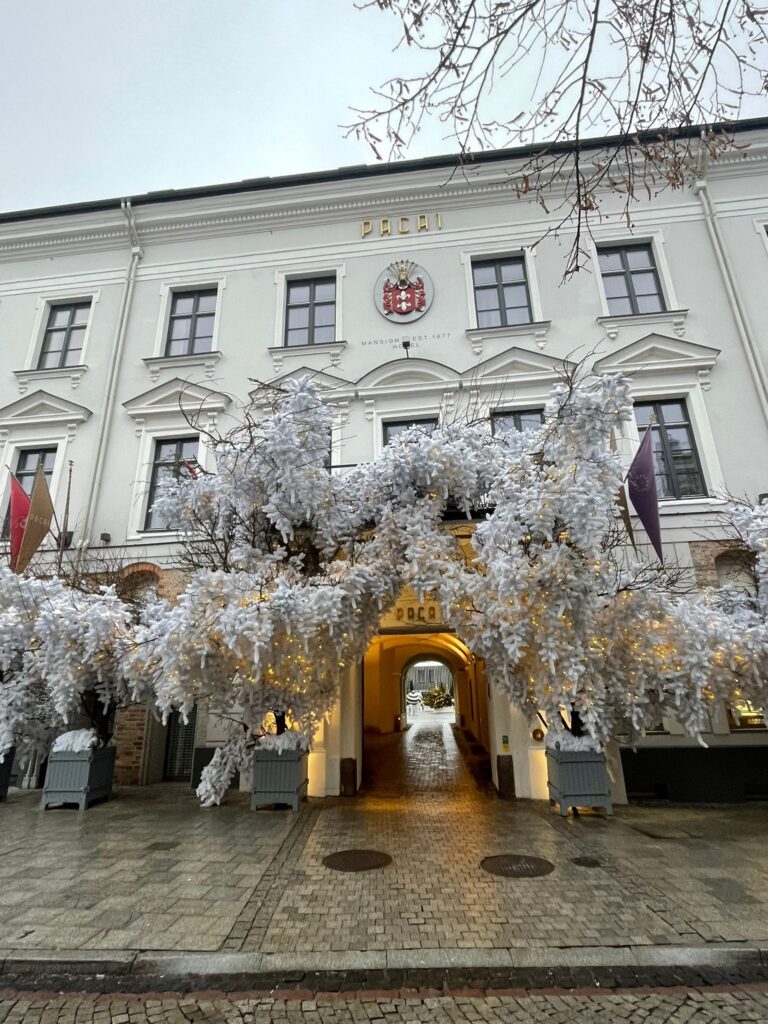
Where is Worth Visiting in Vilnius?
Everywhere is worth visiting in Vilnius. But you didn’t come all this way just for a short answer like that. So let’s get stuck into what the Lithuanian capital has to offer, starting with one of Europe’s most unique places.
Republic of Uzupis
Background of Uzupis
Once one of Vilnius’ most dangerous neighbourhoods, Uzupis has undergone some heavy gentrification. But this alone does not explain its fame. On April Fools Day in 1997, the Republic of Uzupis was founded.
The republic was created as a joke. But over 2.5 decades later and the joke is still going strong.
Cross the bridge to enter the republic, and your first stop will be the “barliament”. The primary purpose of this building is for “officials” to gather and make the laws for the republic.
The “official” currency is the EuroUzas although in practice, this mocked up euro-lookalike has little use. Although it is generally accepted on April Fools Day.
They also have their own passport, flag, and even border control. Although the passport is useless outside the mockup “republic” and the border control only operates on April Fools Day. This is also the only day you can get an Uzupis passport stamp. Although be warned, there have been cases of people being denied access to countries due to novelty stamps existing in their passport.
The republic is most notable for being a bohemian neighbourhood influenced mostly by artists. Art is a key part of Uzupis’ character.
It has often been compared to Christiania in Denmark. Christiania is another psuedo-country, set up by art-loving hippie types as an alternative society based within a real country. Although Uzupis is more light-hearted and exists primarily as a joke.
Let’s have a look at some of the highlights of Uzupis.
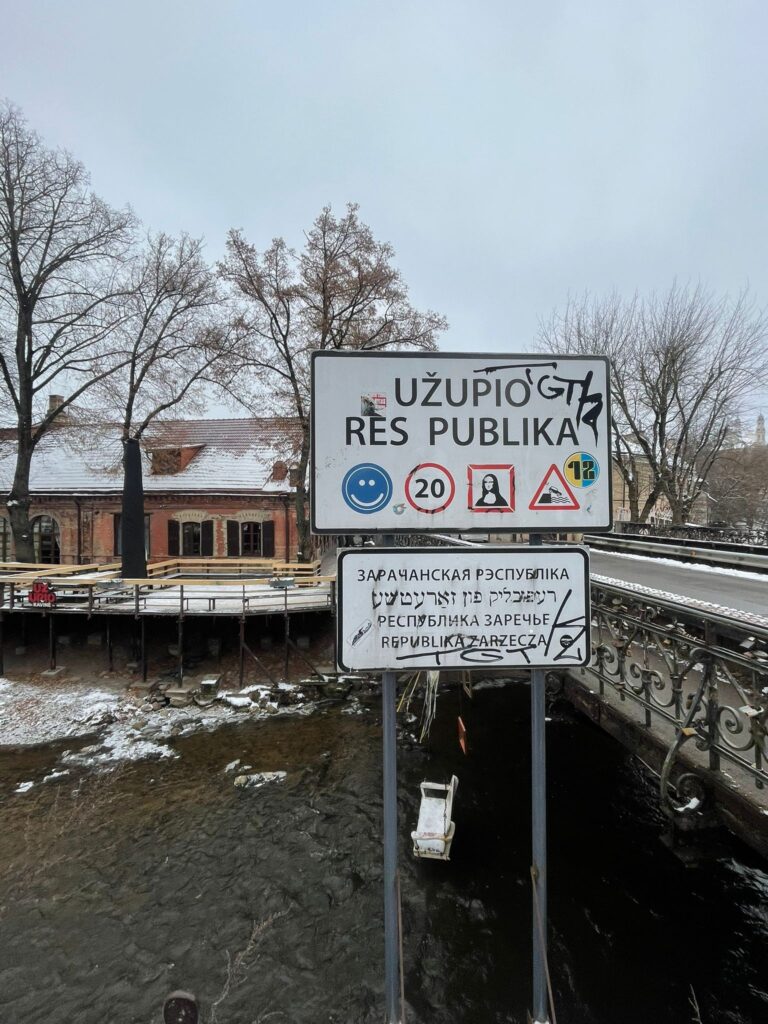
The Constitution of Uzupis
The constitution lists the 41 laws which apply in Uzupis. Some are jokes, others more serious. Examples include “everyone has the right to be unique”, “a dog has the right to be a dog” and “everyone has the right to die, but this is not an obligation”.
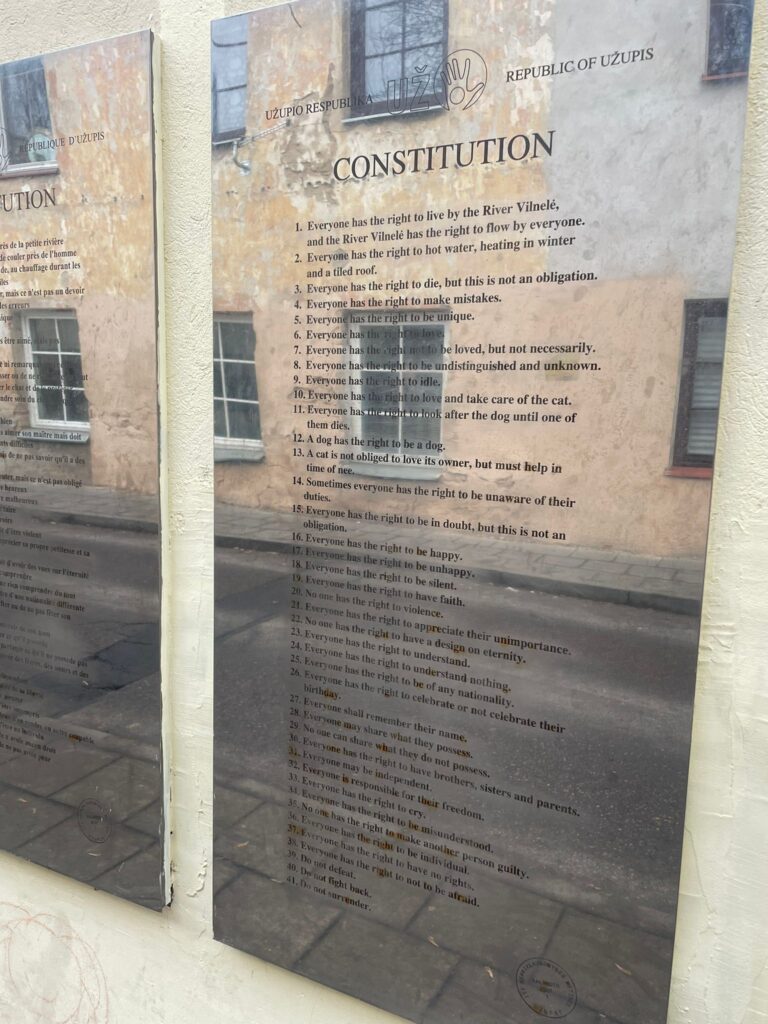
Backpacker Jesus
This statue of Jesus was erected to support the claim that “Jesus was the first ever backpacker”. Again, a joke that gives the republic its quirky reputation.
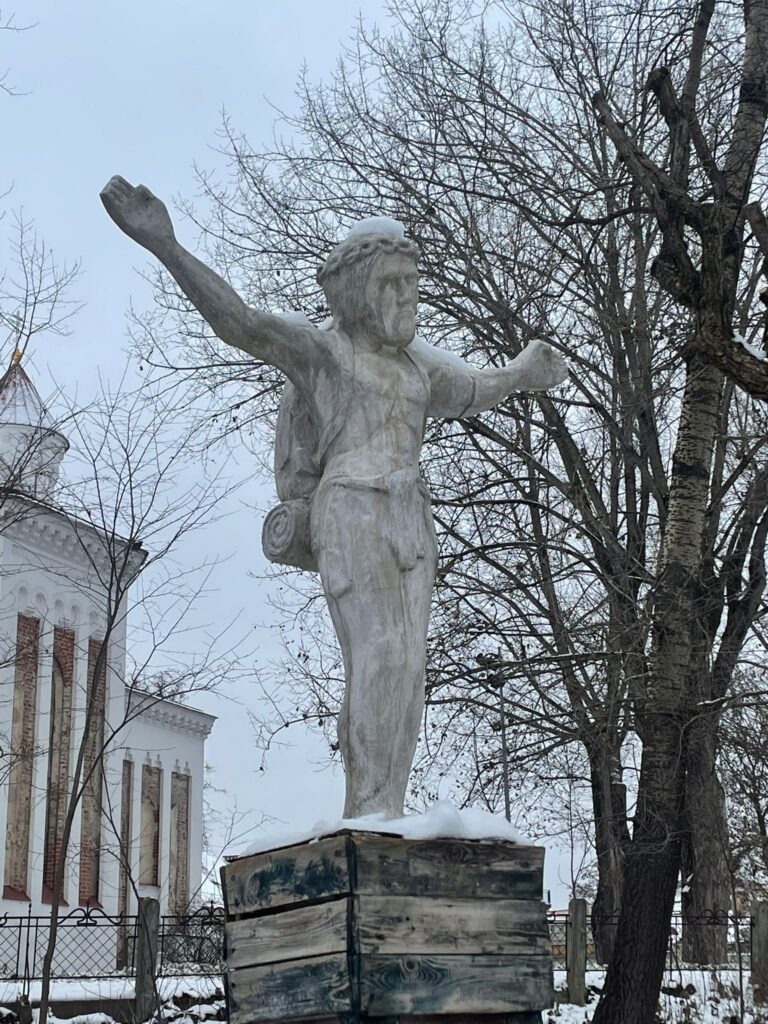
The Beer Fountain
This rather plain-looking fountain is exactly that for 364 days per year. But come April 1st, when Uzupis celebrates “independence”, this fountain dispenses beer! The bad news? Demand, funnily enough, outweighs supply. The beer taps are often dry within just fifteen minutes of being turned on. Get here ASAP on April Fools Day to avoid disappointment.
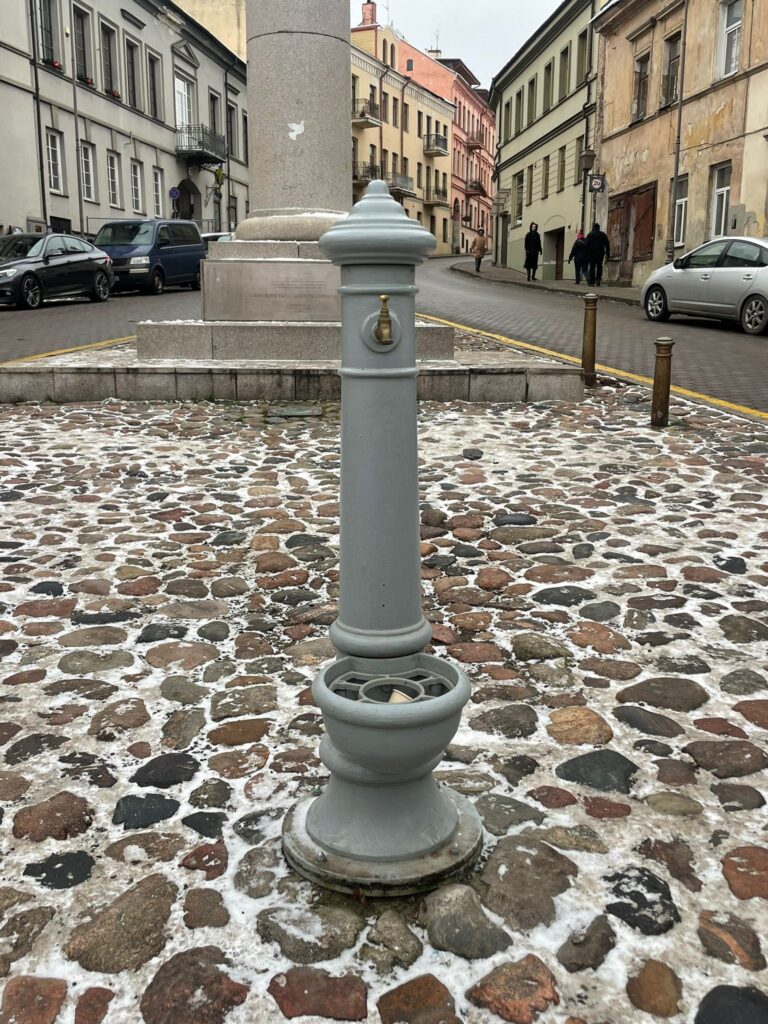
Tibeto Skveras (Tibet Square)
Uzupis strongly supports Tibet in their dispute with China. In 1951, Mao Zedong’s China annexed Tibet. The Seventeen Point Agreement was signed by both the Chinese and Tibetan governments, to hand Tibet over to what was now the People’s Republic of China. However, the Dalai Lama claimed the agreement had been signed under duress, and China seized Tibet illegally.
Tibetans were forced to flee their homeland, and many have since set up homes in the mountains of Northern India today. But they still wish to return to their rightful homeland.
Uzupis sympathises with the Tibetan cause, and have since formed an unlikely friendship with the Tibetan people. As a result, the Tibet Square was set up in Uzupis to promote the Tibetan people’s cause. The Dalai Lama himself has even visited on a number of occasions.

Art Without Meaning
Not everything in Uzupis was created with a message behind it, jokingly or otherwise. Many creations within the neighbourhood have no meaning behind them whatsoever. People just created whatever they wanted. Which I guess does ironically have a meaning behind it. It shows Uzupis for what it is at heart: a playground for creatives to express themselves without barriers.
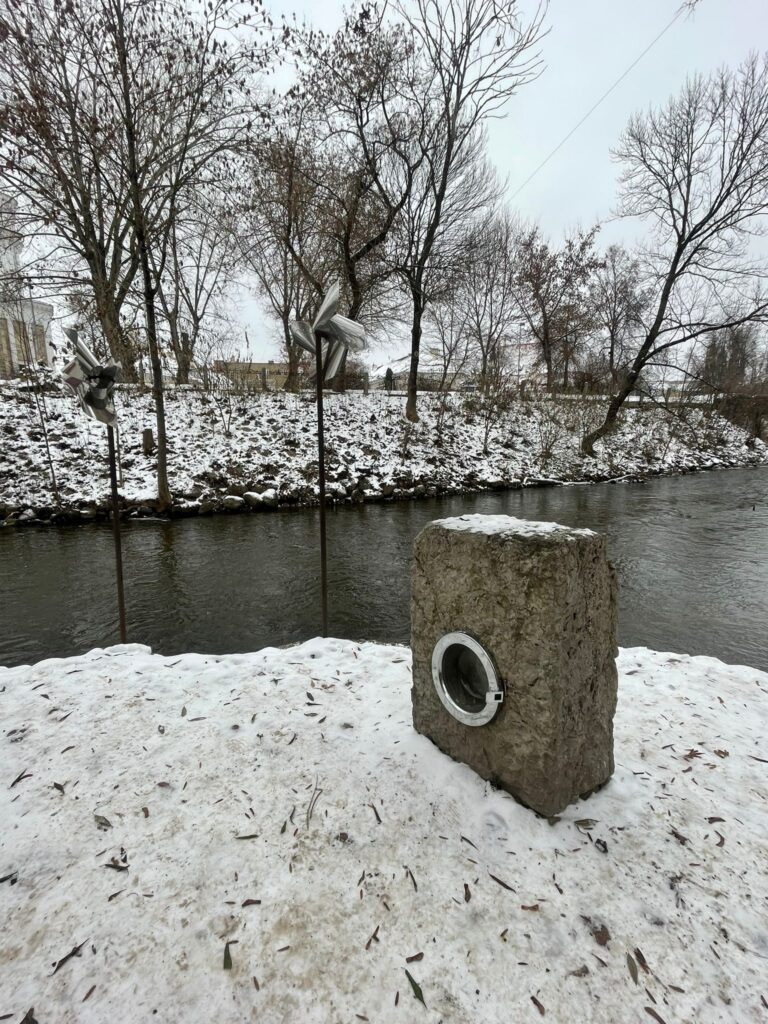
Museum of Occupations and Freedom Fights (KGB Museum)
An Introduction to the Former KGB Headquarters in Vilnius
Vilnius has something for everyone. From the fun (Uzupis) to the dark (here).
As mentioned previously, Lithuania was occupied by the USSR for almost 50 years. Sinister spy organisation, the KGB, controlled and monitored what the civilian population did during that period. They set up headquarters in Vilnius just across from Lukiskes Square, that HQ is now the KGB Museum documenting what happened there during the occupation period.
The museum is a bleak place. Aside from all the spying and restrictions on freedoms, the KGB tortured and executed many innocent people.
In the upper floors, you will find plenty of rooms detailing the equipment used for spying purposes.

The Torture Chambers of the Lower Floors
It is on the lower floors where the darkest places are found. Both literally and metaphorically speaking. Torture chambers are found there, with a variety of different purposes. In the padded cell was a straitjacket in which prisoners would be placed if they were declared insane (often as a result of KGB torture). The padded walls ensured their screams would not be heard during torture by their oppressors.
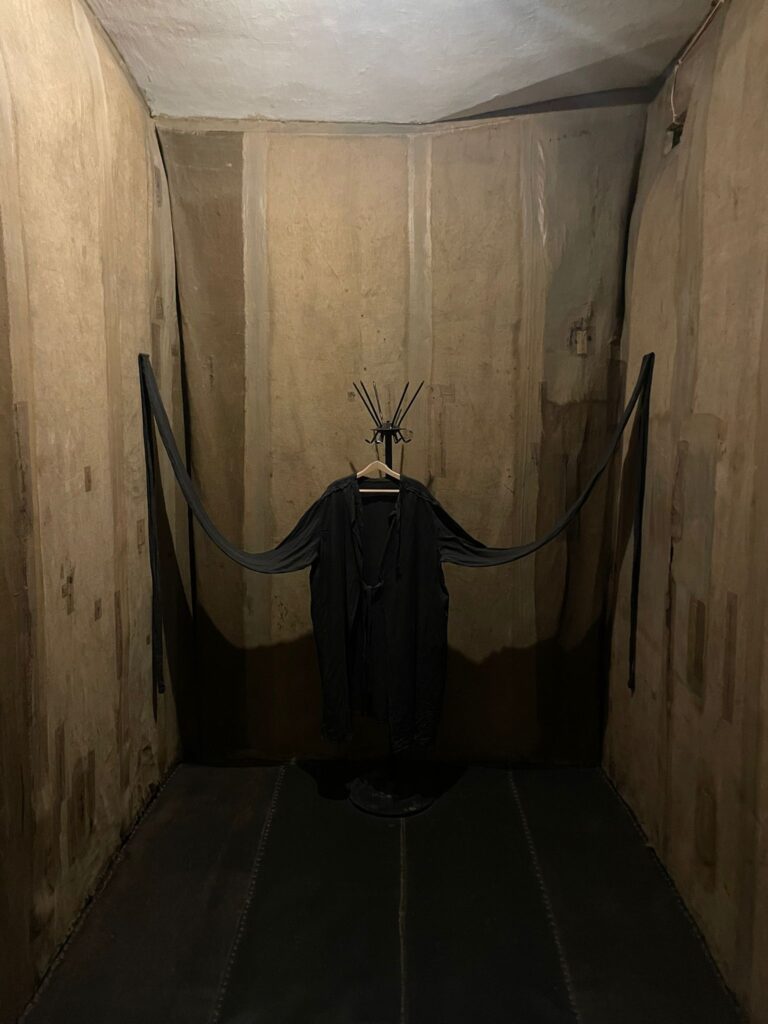
Solitary confinement cells existed, and were built in a way to allow ice cold water to flood them. This ensured nothing but more torture and misery for the prisoners.
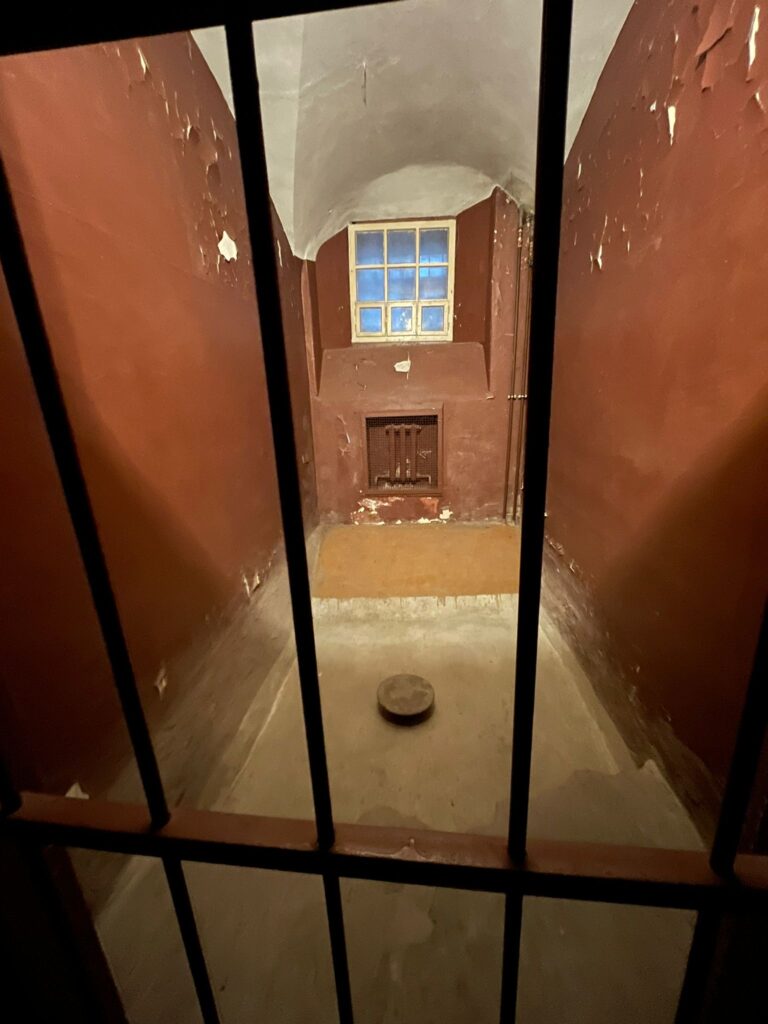
Prisoners would be allowed into a tiny exercise yard for just ten minutes a day. Here they would be forced to exercise in the freezing yard, which has been known to go as low as -37 degrees Celcius. After Stalin’s death, prisoners would be able to use the yard for an hour.
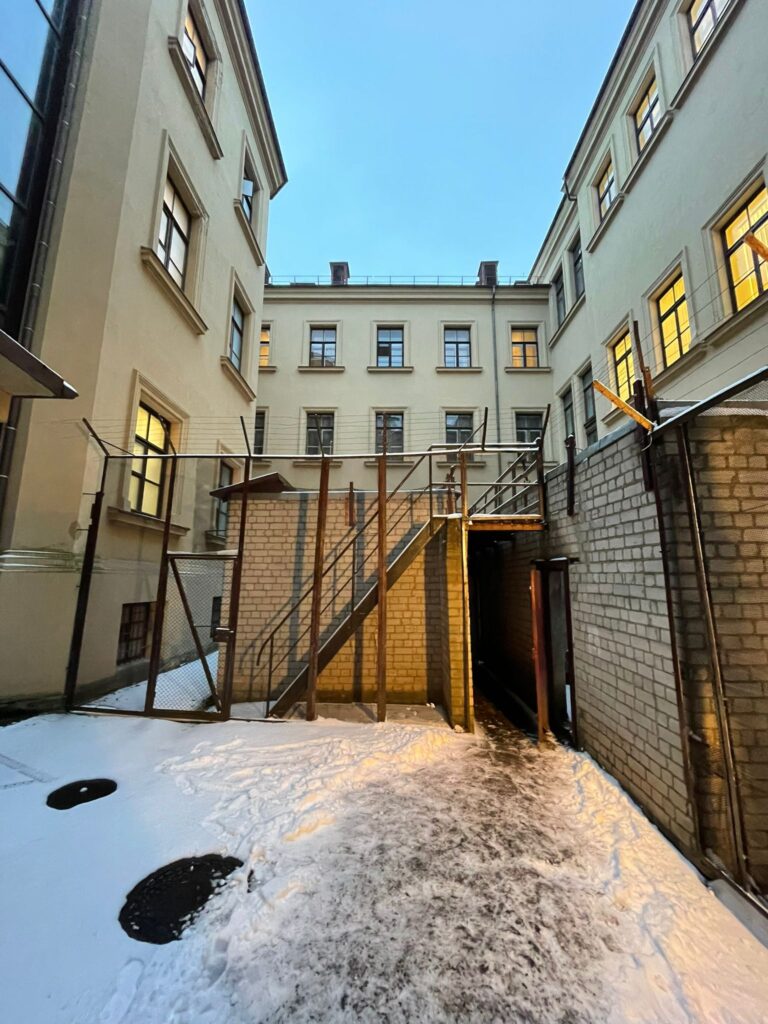
The final stop for many prisoners would be the execution chamber. Here two KGB agents would bring victims in. Then, a third agent, hidden behind the door, would come out and shoot them in the head.
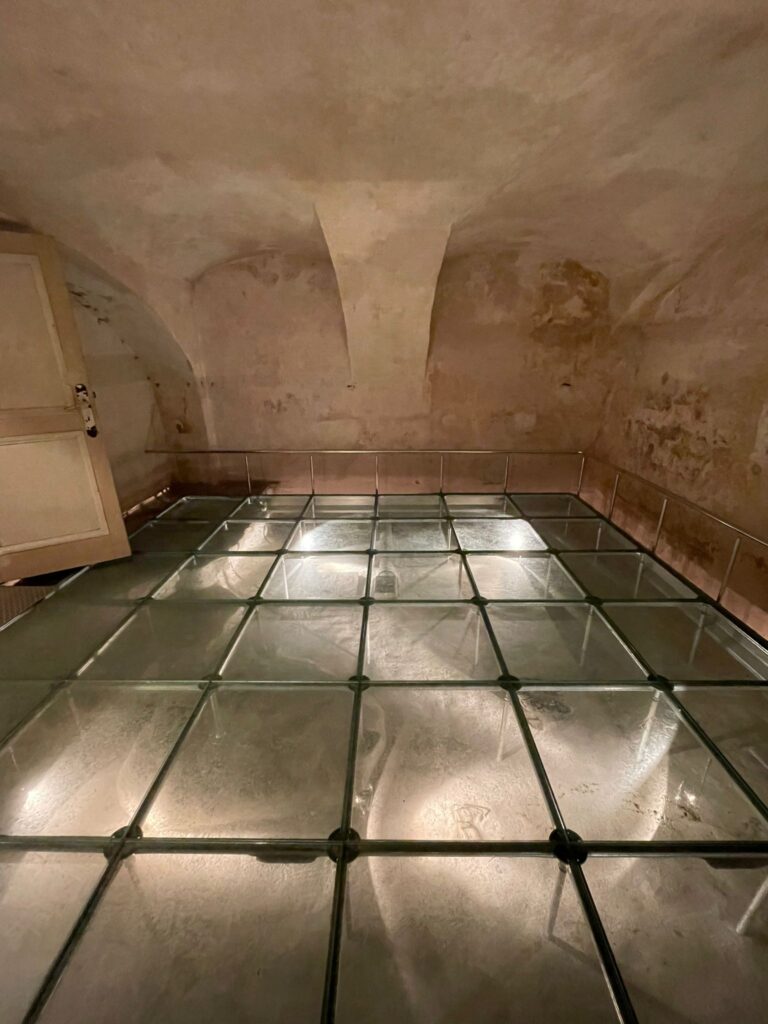
Finally, Lithuania’s suffering at the hands of the Soviet Union came to an end in 1991 following independence. They wasted no time in kicking the KGB out of the country and Lithuania has become a very safe country to live in ever since.
Hill of Three Crosses
Fortunately, compared to the KGB Museum, there are much happier places in Vilnius that are worth visiting. The Hill of Three Crosses is one of them.
You can hike up this hill for free. At the top you will find…
Go on, have a guess…
Yep, that’s right, there are three crosses!
They were erected to pay tribute to a group of Franciscans murdered at the spot where they are based. They also represent the spread of Christianity in Lithuania, which replaced paganism as the main religion. Aside from the meaning of the crosses, they also offer some great views overlooking Vilnius.
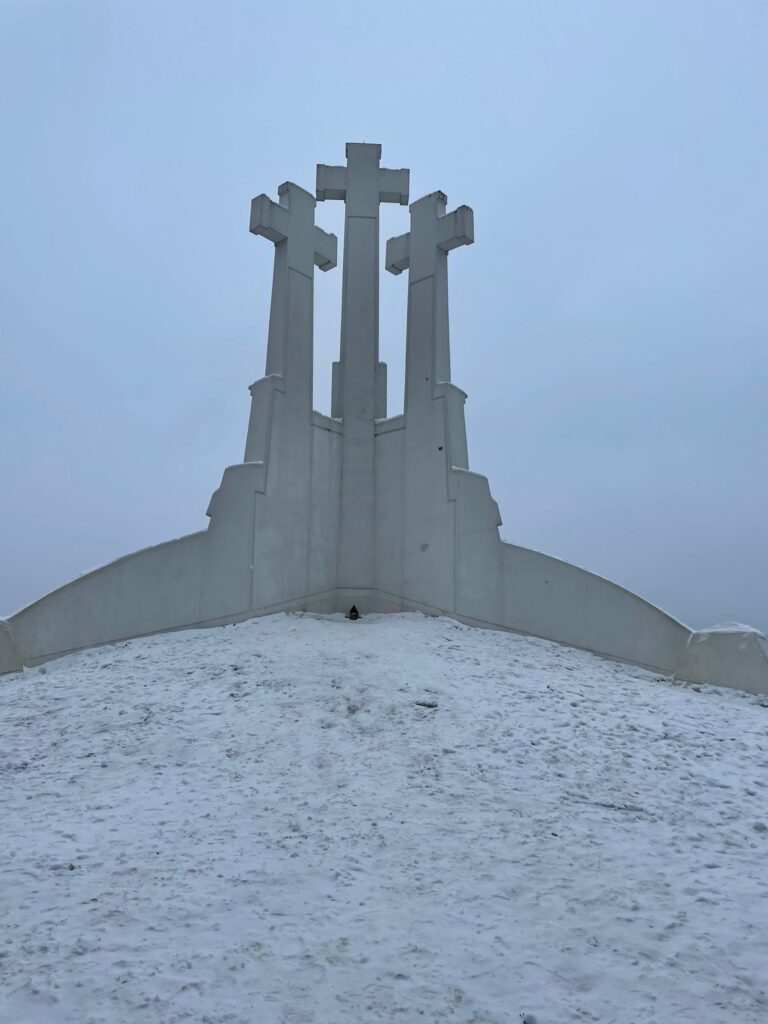
Gediminas Tower
If you want to walk up to a viewpoint of Vilnius, but don’t wish to hike all the way up to the Three Crosses, then Gediminas Tower is the place you want to go.
Gediminas is one of the key men involved in founding the city of Vilnius. He was instrumental in building a large castle on top of the hill, which the city was built around. Not much of the castle remains today. Only Gediminas Tower.
Inside is an archeological museum which costs 6 euros (£5/$6) to enter.
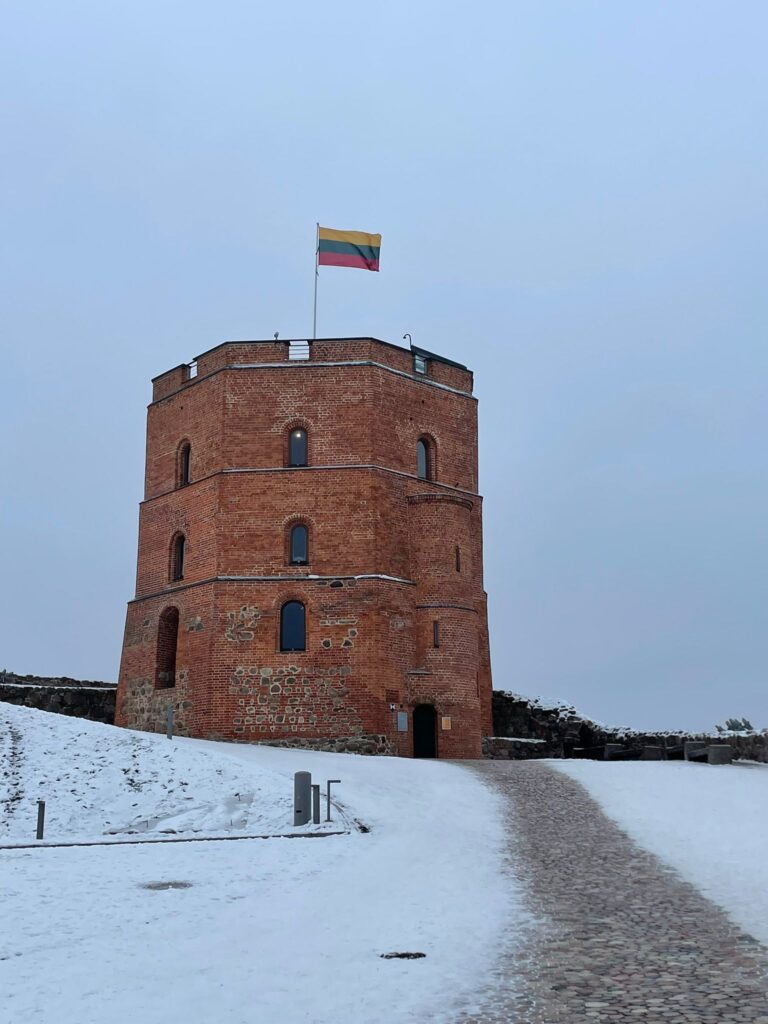
Local Markets (Hales Turgus)
If you want a glimpse into the life of real everyday Lithuanians, then Hales Turgus is the place to go. This traditional marketplace sells all sorts of local foods ranging from meats to fruits, bakery products, and more. If you want to eat like a local, and do so on a budget, then this is the place to go.

Christmas in Vilnius
One of my favourite activities in Vilnius was to walk around admiring the Christmas decorations. Admittedly, the Christmas market in Vilnius isn’t great. There are very few stalls there. You are much better off going to the Christmas markets in Riga, Tallinn or even Helsinki. Vilnius makes up for that however with stunning decorations all around the city. It’s worth going just to see these in December, even if it’s the only thing you do.
Vilnius also has a giant Christmas tree next to the Christmas markets. They decorate it differently each year. In 2022 when I visited, they decorated it to look like a giant birthday cake. This is because 2023 marked 700 years since Vilnius became the capital of Lithuania.
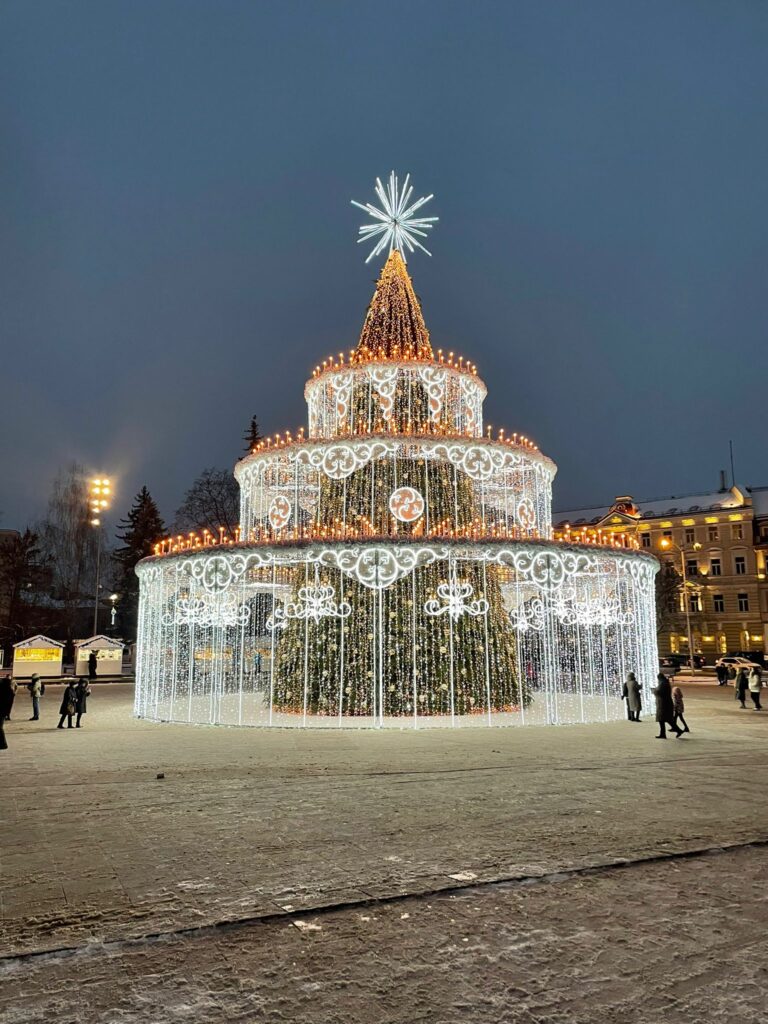
The Supermarket Without Staff
Where do you think of when you think of futuristic cities with technology ten years ahead of the world?
Tokyo? Singapore? Dubai?
I have a new name to add to that list: Vilnius.
The Lithuanian capital is home to a supermarket called Iki Express just off the main square. What is special about this place? Well, there are no staff there, and no scanners to use a self-checkout either. Instead, dozens of cameras and scanners appear on the ceiling tracking your every move. When you pick up an item, the scanners will know. Put it straight in your bag and when you reach the exit, the machine will tell you exactly how much you owe. From my experiences, it was always pretty accurate!
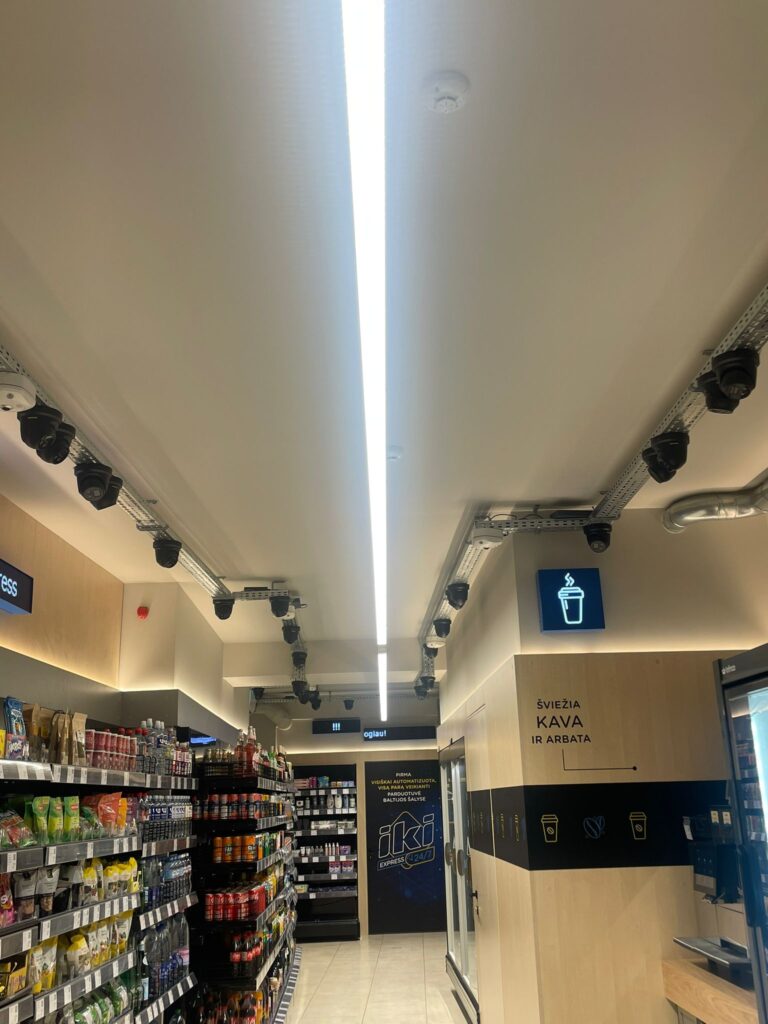
Where to Stay in Vilnius
I only stayed in one hostel in Vilnius, and it was a good one which I would say was worth visiting for a few nights. Let’s weigh up the pros and cons below:
Jimmy Jumps House/Hostel (£13/$16 Per Night)
Pros
The location was great, right in the centre of town. There was a bar at reception and activities offered by the hostel, including pub crawls and shooting. I didn’t participate in either however, so cannot comment any further on those. The staff here were also pleasant, and the showers were warm. Much needed in the Lithuanian winter!
Cons
Could be cold in the bedrooms at times.
Overall
This was a very good place to stay. It didn’t feel like one of the best hostels I’ve ever been to (from around 150+ at the time of writing). But it was certainly in the next tier below that. A pleasant hostel which I would rate 8/10.
Final Thoughts: Is Vilnius Worth Visiting?
Vilnius is worth visiting. It is a wonderful city on every single level. A fascinating history, explained in depth by local tour guides should you take a free walking tour, or in the KGB Museum. A bizarre oddity in the form of Uzupis, one of the most unique places in Europe. Beautiful scenery from above the city at Gediminas Tower and the Three Crosses Hill. Beautiful scenery within the city itself, especially around Christmas time. And lovely people. Lithuanians may appear a little frigid from the outside, but they’re good people deep down. You will learn this as you begin to interact with them.
Vilnius is cheap, especially compared to Western Europe. Vilnius is very safe. If I had to come up with one negative thing to say about Vilnius, it would be the cold weather. But even that provides the perfect setting for the snow and Christmassy vibes in december. So perhaps that isn’t such a bad thing.
Lithuania is one of my favourite countries in Europe to visit solo or with friends, and Vilnius is one of the best cities on the continent.
If you’re considering a trip to somewhere popular and mainstream like Paris, I’d say forget it, go to Vilnius instead, and I’m almost certain you will love it here.
If Paris is Goliath, then Vilnius is David. And we all know who won that battle…
Posts from every other stop on my adventure to every country in the world can be found on my destinations page.

